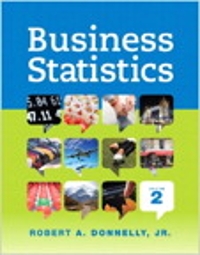Answered step by step
Verified Expert Solution
Question
1 Approved Answer
Sony case questions 1. Using leadership theories (e.g., Situation Theory (a.k.a., Hersey and Blanchard Model), Path-Goal Theory, or Transactional/Transformational leadership), (1) compare leadership styles of
Sony case questions 1. Using leadership theories (e.g., Situation Theory (a.k.a., Hersey and Blanchard Model), Path-Goal Theory, or Transactional/Transformational leadership), (1) compare leadership styles of Tokoro and Kitano, and (2) describe how such leadership styles affected stakeholders. 2. Kitano believes that "research, for a researcher, is his entire life, and it is impossible to evaluate with a uniform KPI. KPIs are not a good motivator for a true researcher." Do you agree? How should Sony CSL measure the performance and success of each project and for the portfolio of Sony CSL? What are the challenges in managing fundamental research, based on the experiences of IBM, Google, and MIT? Identify key stakeholders and discuss how Sony CSL CEOs' decisions make impacts on the stakeholders. 4. Based on Exhibit 2 in the case, draw a chart to show a trend of each segment sales, using Excel. (Note: Copy & paste the chart to the MS-Word file.) 5. Using the information from Exhibit 2, (1) calculate the operating margin of each segment in 2017 and 2018 (2) identify which segment was the most profitable in 2017 and 2018, based on the operating margin. (Note: Operating margin = Operating income = Sales). 6. Using information from both Exhibit 2 in the case and R&D expenses table (below), (1) calculate Research and Development (R&D) intensity in five segments (Game & Network Services, Home Entertainment & Sound, Imaging Products & Solutions, Mobile communications, (Semiconductors) in 2017 and 2018, and then (2) identify the segments with highest R&D intensity in each year. (Note: R&D intensity = R&D expense Sales) Segment Game & Network Services Home Entertainment & Sound Imaging Products & Solutions Mobile Communications Semiconductors R&D Expenses (Yen in billions) FY 2017 95.6 47.3 58.6 117.6 44.4 FY 2018 106.2 58.0 58.6 107.2 44.9
Step by Step Solution
There are 3 Steps involved in it
Step: 1

Get Instant Access to Expert-Tailored Solutions
See step-by-step solutions with expert insights and AI powered tools for academic success
Step: 2

Step: 3

Ace Your Homework with AI
Get the answers you need in no time with our AI-driven, step-by-step assistance
Get Started


